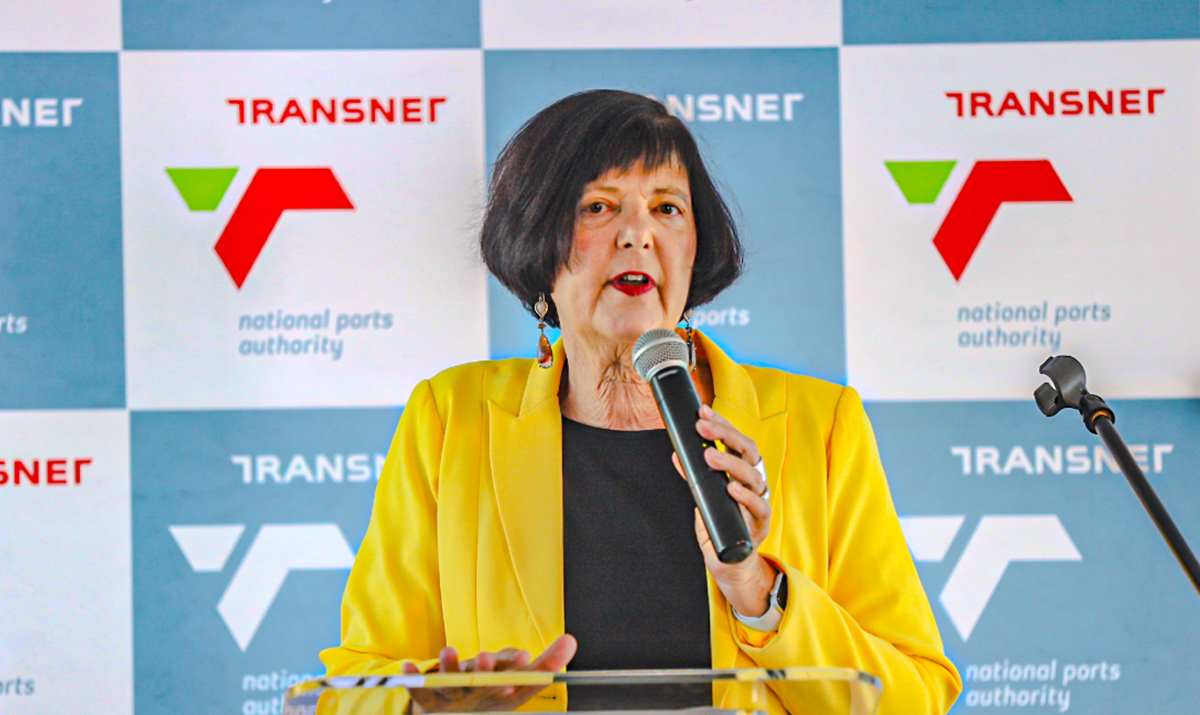
22 Jan Interview with Barbara Creecy, Minister of Transport, South Africa
Business Focus (BF): What are the key challenges currently facing South Africa’s transport sector, particularly in terms of infrastructure development, safety, and accessibility?
CREECY: In 2013, our passenger rail system facilitated 600 million passenger journeys annually. Currently, we’ve recovered 31 priority lines and over 200 stations, but we’re only achieving 40 million passenger journeys a year. This impacts the poorer segments of our population, many of whom cannot afford minibus taxis. Consequently, about 20% of the working population walks to work—not out of choice, but necessity. Revitalizing the rail system is essential to support this demographic, with a goal to return to 600 million passenger journeys annually.
On the freight side, rail and port systems transported 220 million tons of freight from 2017 to 2018. Last year, this figure dropped to 149 million tons, shifting the burden onto roads. This has three major consequences: higher costs for transporting goods, degradation of road infrastructure, and reduced competitiveness for South African exports. Over the next five years, we aim to increase freight transport to 220 million tons, with a stretch goal of 250 million tons.
Our strategy includes the Transnet Recovery Program, which addresses infrastructure, security, and rolling stock issues. This year, we aim to increase freight transport to 164 million tons, targeting 190 million tons next year. Achieving 220–250 million tons will require private sector participation, and by 2025, the Private Sector Participation Unit within the Development Bank of South Africa will be operational. This unit will focus on ensuring financial close for bids, drawing on lessons learned from private participation in energy generation.
Additionally, we’re receiving many bids for rail and port concessions. It’s crucial to establish a transparent framework to manage these opportunities effectively.
BF: What role do you see the transport sector playing in supporting South Africa’s economic growth, and how do challenges in this sector impact broader development goals?
CREECY: Freight logistics are a persistent constraint on the economy, particularly affecting the mining and manufacturing sectors by increasing export costs and reducing competitiveness. Fixing Transnet and optimizing mineral and general freight corridors, such as the Durban port corridor, are critical.
Transport can also drive reindustrialization and our transition to a green economy. South Africa, through Sasol, owns Fischer-Tropsch technology, which converts carbon-based feedstocks into synthetic fuels, including green hydrogen and ammonia. These fuels are essential for the shipping and aviation industries. There’s even potential for using green hydrogen to power trains, replacing diesel locomotives.
Integrating rail and port infrastructure is vital for growth. For example, Saldanha Bay lies at the end of the important Sishen-Saldanha mineral export corridor, which primarily carries manganese and iron ore. Historically, Saldanha was a steel-producing hub. With the green hydrogen roadmap, it could become a center for green steel production. As we regenerate rail infrastructure, the demand for steel will grow significantly.
BF: How will infrastructure investments enhance the capacity and competitiveness of South Africa’s aviation sector?
CREECY: By 2029, we aim to reach 30 million air passengers annually, up from the current 17–18 million, and to handle 1.2 million tons of air freight. Although still recovering from COVID-19, we’re back to pre-pandemic levels this year. The African continent offers tremendous potential for new routes, and South African Airways (SAA), now out of business rescue, is prioritizing regional connections.
The African Union’s Open Skies Policy promotes regional aviation cooperation, aligning with the growing demand for air travel across the continent. South Africa also remains a highly sought-after tourist destination, further supporting aviation growth.
Are you still considering external investors for South African Airways, and what is the medium-term strategy for the airline?
CREECY: Yes, we require an equity partner for SAA to secure the cash injection needed to expand our routes and fleet. By March 2026, we will be up to date with audits, a critical step for attracting an equity partner. Interest from potential partners is strong.
What is your final message to international investors and American businesses regarding confidence in South Africa, particularly in the transport sector?
CREECY: We are committed to addressing the challenges in the logistics sector, understanding its importance for investment and economic growth. Our master rail strategy and port development plans present exciting opportunities. Once the network statement and requests for information are published, we invite American investors and businesses to explore the prospects in South Africa’s transport sector.
